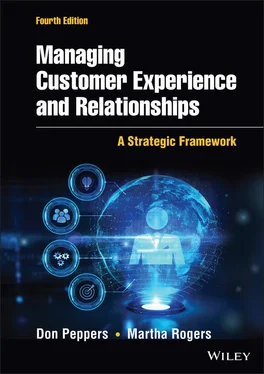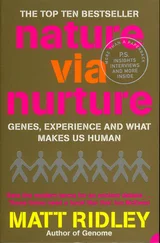But we need to have a stronger understanding of the specific qualities that underlie a better customer experience, and why these qualities are likely to create value for the customer-strategy enterprise.
When a customer teaches an enterprise what they want or how they want it, the customer and the enterprise are, in essence, collaboratingon the sale of the product. The more the customer teaches the enterprise, the less likely the customer will want to leave. The key is to design products, services, and communications that customers value, and on which a customer and a marketer will have to collaborate for the customer to receive the product, service, or benefit.
Enterprises that build Learning Relationships clear a wider path to customer profitability than companies that focus on price-driven transactions. They move from a make-to-forecast business modelto a make-to-order model, as Dell Computer did when it first created a company that reduced inventory levels by building each computer after it was paid for, using efficient mass customizationtechnology. By focusing on gathering information about individual customers and using that information to customize communications, products, and services, enterprises can more accurately predict inventory and production levels. Fewer orders may be lost because mass customization can build the products on demand and thus make available to a given customer products that cannot be stocked ad infinitum. (We will discuss customization further in Chapter 10.) Inventory-less distribution from a made-to-order business model can prevent shortages caused in distribution channels as well as reduce inventory carrying costs. The result is fewer opportunity losses. Furthermore, efficient mass-customization operations can ship built-to-order custom products faster than competitors that have to customize products from scratch. 3 In many ways, economies of scalehave been replaced by economies of scope. 4
Enterprises that build Learning Relationships clear a wider path to customer profitability than companies that focus on price-driven transactions.
Learning Relationships have less to do with creating a fondness on the part of a customer for a particular product or brand and more to do with a company's capability to remember and deliver based on prior interactions with a customer. An enterprise that engages in a Learning Relationship creates a bond of value for the customer, a reason for an individual customer, or small groups of customers with similar needs, to lose interest in dealing with a competitor, provided that the enterprise continues to deliver a good-quality product and service at a fair price and to remember to act on the customer's preferences and tastes. 5 Learning Relationships may also be based on an inherent trust between a customer and an enterprise. For example, a customer might divulge a credit card number to an organization, which records it and remembers it for future transactions. The customer trusts that the enterprise will keep this credit card number confidential. And the enterprise makes it easier and faster for the customer to buy because it is not necessary to reenter the credit card number for each purchase. (Later in the chapter, we'll learn more about the link between emotions and behavior in relationships.)
Learning Relationships have less to do with creating a fondness on the part of a customer for a particular product or brand and more to do with a company's capability to remember and deliver based on prior interactions with a customer.
THE TECHNOLOGY REVOLUTION AND THE CUSTOMER REVOLUTION
Organizations have accelerated their customer-focusedstrategies during the last few years, but managing customer relationships has been a business discipline for many years, since long before the era of mass marketingand mass media. Before the Industrial Revolution, and before mass production was born, merchants established their businesses around keeping customers.
Small towns typically had a general store, a local bank, and a barbershop. Each proprietor knew each one of their customers individually. The bank teller, for example, knew that Mr. Johnson cashed his paycheck each Friday afternoon. When Mr. Johnson came into the bank, the bank teller already had his cash ready for him in twenties and tens, just as he liked it. If Mr. Johnson unexpectedly stopped cashing his paycheck at the bank, the teller would not wonder why check-cashing service usage was dropping in the bank, but rather would wonder what had happened to Mr. Johnson. In short, the bank depended on the relationship with the individual customer and how much the people who worked for the bank knew about that customer. The teller's memory in this example is akin to today's data warehouses, which can store millions of data points, transaction histories, and characteristics about customers. Personal memory enabled the teller to fulfill each customer's individual banking needs and, ultimately, to build a profitable relationship with each one. The more the teller knew about a customer, the more convenient banking was for that customer—and the more likely the customer would continue to use the bank.
But during the past century, as enterprises sought to acquire as many customers as they possibly could, the local proprietor's influence over customer purchases decreased. Store owners or managers became little more than order takers, stocking their shelves with the goods that consumers would see advertised in the local newspaper or on television and radio. Mass-media advertising became a more effective way to publicize a product and generate transactions for a wide audience. But now technology has made it possible, and therefore competitively necessary, for enterprises to behave, once again, like small-town proprietors and deal with their customers individually, one customer at a time.
Treat different customers differently.
At the same time, technology has generated a business model that we will refer to as the trust platform. 6 Becoming more and more prominent since the last edition of this book, trust platforms are epitomized by companies such as Uber, Airbnb, and Zipcar—and a host of others with brands that will always be in flux, but durable in concept. This kind of business depends on using interactive technology to connect willing buyers with willing sellers, while relying on crowd-sourced feedback to ensure mutualtrust. Rather than a sharing economy, trust platforms facilitate an initiative economy, based on the entrepreneurial initiatives of thousands of individuals, all seamlessly connected to the larger network.
We must note that social interactions are not as manageable as a company's marketing and other functions are. The social interactions a company has with customers and other people can't be directed the same way advertising campaigns or cost-cutting initiatives can. Instead, in the e-social world, what companies are likely to find is that top-down, command-and-control organizations are not trustable, while self-organized collections of employees and partners motivated by a common purpose and socially empowered to take action are more trustable. (We'll address the distinction between trustability and trustworthiness in Chapter 3.)
Customers Have Changed, Too
The technological revolution has spawned another revolution, one led by the customers themselves, who now demand products just the way they want them and flawless customer service. Enterprises are realizing that if they really know little or nothing about their individual customers, they must capture a clearer understanding of each customer's needs. Customers, meanwhile, want to be treated less like numbers and more like the individuals they are, with distinct requirements and preferences. They are actively communicating these demands back to the enterprise (and, through social mediaand mobile apps, with each other!). Where they once would bargain with a business, they now tell managers of brand retail chains what they are prepared to pay and specify how they want products designed, styled, assembled, delivered, and maintained. When it comes to ordering, consumers want to be treated with respect. The capability of an enterprise to remember customers and their logistical information such as contact information, shipping address, and ordering preferences not only makes ordering easier for customers but also lets them know that they are important. Computer applications that enable options such as one-click, or express, ordering on the web are creating the expectation that good online providers take the time to get to know customers as individuals so they can provide this higher level of service. 7
Читать дальше












